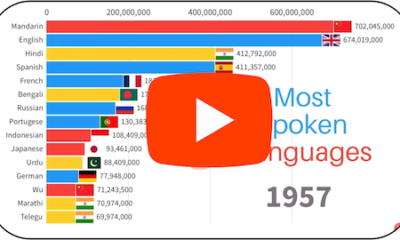Hungry for income? Choose carefully.
When you are working or looking for a job, it’s only natural to think about the size of your paycheck. After all, you need to pay your bills, and it always helps to have a little extra.

The same need exists in retirement. But in both situations, focusing excessively on income can be a mistake. For example, taking the job that pays the most may lead you to choose work you don’t like or fail to consider your desired lifestyle.
In retirement, overemphasising income-producing investments can also lead to costly errors. Proof of these risks surfaced again a few weeks ago when — for the second time in a year — U.S. industrial giant General Electric slashed its quarterly dividend from 12 cents to 1 cent following news of a criminal accounting probe.
It’s often difficult to break the habit of fixating on income. We spend our working years trying to amass enough to retire. Our minds concentrate on a number — $1 million, for example — that will allow us to stop working. Psychologically, it becomes challenging to shift to spending that money, so many retirees try to live off portfolio income only.
History also encourages an income focus. When interest rates were high, many retirees could count on interest and dividends to pay their bills without dipping into principal. But as interest rates declined, so did income. In the last decade, the yield on a globally diversified portfolio split evenly between shares and bonds fell from nearly 5 per cent to 2.5 per cent, a 50 per cent decline in income, according to Vanguard research.
Investors may try to close this gap by overweighting income-producing or defensive assets, but let’s look at how these strategies can unwittingly increase risk:
Moving money from fixed income into shares that pay high dividends. This choice can increase portfolio volatility for a simple reason: Shares are riskier than bonds. When share prices fall, investment-grade bonds tend to rise in value, cushioning a portfolio. Also, shares that pay higher dividends tend to be value, as opposed to growth, shares and are concentrated in certain industries, such as financials. As a result, boosting allocations of dividend-paying stocks can reduce diversification and increase vulnerability to sector downturns — exactly the opposite of what the investor hopes to achieve.
Replacing investment-grade bonds with higher-yielding bonds. Higher-yielding bonds can be as volatile as shares, so this strategy also sacrifices downside protection for the potential of higher income. Bonds that pay above-average rates of interest are riskier credits. That’s why they are often called junk bonds. During periods of economic turmoil, default rates on lower-quality bonds increase, causing them to fall in value, often in tandem with shares.
Overweighting term deposits and cash while underweighting bonds. Shifting money toward safe bank accounts is tempting. But while term deposits and cash protect principal, they don’t offer capital appreciation in troubled times. When interest rates fall, bank deposits usually earn less money, but investment-grade bonds often increase in value, providing reassuring ballast when shares decline.
The pitfalls of these choices are many, which is why we advocate a total-return strategy, which involves creating a diversified portfolio in line with your financial goals. That way, you base withdrawal amounts on income and capital appreciation.
Compared to the income approach, total-return investing gives you flexibility. You can adjust spending and withdrawals based on overall portfolio growth instead of depending only on the income the investments yield. Total-return investors avoid the downsides of overemphasising income and enhance their ability to reach their goals.
Many investors can benefit from getting professional advice when making these decisions. If you’re looking to learn more about total-return investing, our paper, “From assets to income: A goals-based approach to retirement spending”, can help.
Written by Robin Bowerman
Head of Corporate Affairs at Vanguard.
13 November 2018
vanguardinvestments.com.au
Sofie Korac is an Authorised Representative (No. 400164) of Prudentia Financial Planning Pty Ltd, AFSL 544118 and a member of the Association of Financial Advisers.
Financial Advice Sydney and the North Shore Office based in Gordon NSW







